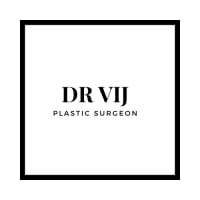Breast Augmentation
Breast augmentation is a surgical operation performed to enlarge the breasts for a number of reasons:
To enhance the body contour of a woman, who for personal reasons feels that her breast size is too small. To correct a loss in breast volume after pregnancy. To balance breast size, when there exists a significant difference between the size of the breasts.Breast Lift with Implants
Breast lift, or mastopexy is a surgical procedure to raise and reshape sagging breasts. Factors such as pregnancy, nursing, weight change, aging and gravity produce changes in the appearance of a woman’s breasts. As the skin loses its elasticity, the breasts often lose their shape and begin to sag. Breast lift, or mastopexy is a surgery performed by plastic surgeons to raise and reshape sagging breasts. This operation can also reduce the size of the areola, the darker skin around the nipple. If your breasts are small or have lost volume after pregnancy, breast implants inserted in conjunction with mastopexy can increase both firmness and size. Lifting and enlarging the breasts involves more incisions, more "inside-the-breast" surgical dissection, and more surgical closure, all of which take more time and skill than Implant placement alone. Breast augmentation requires only a small incision, precise creation of a pocket for the implants, insertion of implants, and rapid closure. Cost of any operation is related to both the time and surgical effort/skill required, not to mention operating room time, anaesthesia time, and the related increased costs for these things as well.
Removal and replacement of implants
Revisionary breast implant surgery
Breast Reduction
Women who have large breasts may experience a variety of problems from the weight and size of their breasts, such as back, neck, and shoulder pain, and skin irritation. Breast reduction is usually performed for relief of these symptoms rather than to enhance the appearance of the breasts.
Abdominoplasty
Abdominoplasty is a surgical procedure to remove excess skin and fatty tissue from the middle and lower abdomen and to tighten muscles of the abdominal wall. Abdominoplasty is not a surgical treatment for being overweight. Obese individuals who intend to lose weight should postpone all forms of body contouring surgery until they have been able to maintain their weight loss. Abdominoplasty is not a weight loss procedure.
Rhinoplasty
This surgical procedure can produce changes in the appearance, structure, and function of the nose. Rhinoplasty can reduce or increase the size of the nose, change the shape of the tip, narrow the width of the nostrils, or change the angle between the nose and the upper lip. This operation can help correct birth defects, nasal injuries, and help relieve some breathing problems. There is not a universal type of rhinoplasty surgery that will meet the needs of every patient. Rhinoplasty surgery is customized for each patient, depending on his or her needs. Incisions may be made within the nose or concealed in inconspicuous locations of the nose in the open rhinoplasty procedure. Internal nasal surgery to improve nasal breathing can be performed at the time of the rhinoplasty. The best candidates for this type of surgery are individuals who are looking for improvement, not perfection, in the appearance of their nose. In addition to realistic expectations, good health and psychological stability are important qualities for a patient considering rhinoplasty surgery. Rhinoplasty can be performed in conjunction with other surgeries.
Liposuction
Liposuction is a surgical technique to remove unwanted deposits of fat from specific areas of the body, including the face and neck, upper arms, trunk, abdomen, buttocks, hips and thighs, and the knees, calves, and ankles. This is not a substitute for weight reduction, but a method for removing localized deposits of fatty tissue that do not respond to diet or exercise. Liposuction may be performed as a primary procedure for body contouring or may be combined with other surgical techniques such as abdominoplasty, or thigh lift procedures to tighten loose skin and supporting structures. The best candidates for liposuction are individuals of relatively normal weight who have excess fat in particular body areas. Having firm, elastic skin will result in a better final contour after liposuction. Hanging skin will not reshape itself to the new contours and may require additional surgical techniques to remove and tighten excess skin. Body -contour irregularities due to structures other than fat cannot be improved by this technique. Liposuction itself will not improve areas of dimpled skin known as “cellulite”.
Gynaecomastia surgery
Males who have breast development may suffer marked embarrassment. The best candidates are those who understand the procedure and have realistic expectations about the results. There are a variety of different surgical techniques used to reduce the male breast.
Otoplasty
Otoplasty is a surgical process to reshape the ear. A variety of different techniques and approaches may be used to reshape congenital prominence in the ears or to restore damaged ears. Each individual seeking otoplasty is unique both in terms of the appearance of their ears and expectations for results following otoplasty surgery.
Mole / Lesion removal
The majority of skin cancers, moles and lesions can be excised and the wound closed directly. The lesion is marked out under magnification and a margin of normal tissue is included in the excised specimen (a safety margin). The wound is then closed directly with sutures. The excised specimen is elliptical in shape such that the wound can be closed as a flat straight line. The length of the scar is approximately four times the diameter of the lesion.
Thigh Lift
Brachioplasty (arm lift)
Upper Blepharoplasty (upper eyelid surgery).
Lower Blepharoplasty (lower eyelid surgery)
